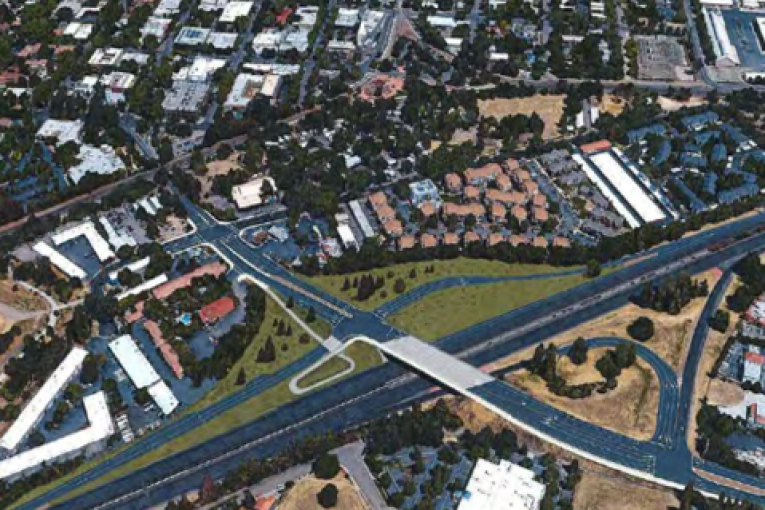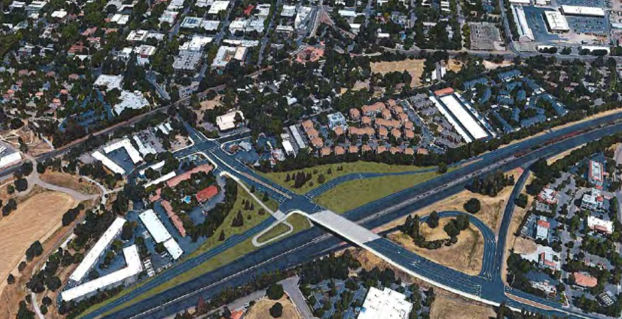

By David M. Greenwald
Executive Editor
Davis, CA – A critical project for Davis, the Richards Blvd. Interchange Improvements Project, will move forward toward a completion of the Initial Study and a declaration of a Mitigated Negative Declaration by the council as a CEQA Exempt project.
The project has been several years in the works. The corridor is one of the major points of entry into the city, as well as a critical connector between South Davis and the downtown.
Parts of the corridor were upgraded in the 1990s, but the city noted “other areas are sub-optimal for all types of travelers.”
City staff estimates that approximately 400 bicyclists and 200 pedestrians cross the interchange each day north of I-80 between the freeway and the Richards underpass.
In the late 1990s, the voters turned down a measure that would have widened the Richards tunnel under the railroad tracks. Currently during peak hours, the traffic backs up over the overpass.
The current configuration of the freeway interchange is problematic.
Staff notes, “The interchange configuration, in which all vehicle movements are uncontrolled, results in high vehicle speeds onto and off from the freeway ramps. These high-speed movements create a safety concern for all modes on Richards Boulevard, particularly bicyclists and pedestrians. There are currently four uncontrolled conflict points between bicyclists and vehicles due to the configuration of the I-80 Westbound ramps.”
Starting in February 2015, the city renewed its focus on improving the interchange itself, working with Caltrans to perform a Project Study Report for the feasibility of a reconstructed “tight diamond” interchange.
Staff worked with Caltrans to produce a PSR which was approved in April 2017, allowing the project to move toward the next phase.
In 2018, the city received a $5 million grant to complete the project, but the project was estimated to cost around $11 million. In August 2019, the city received an additional $2.7 million from SACOG.
The expectation was that the remaining funds would come from local sources—roadway impact fees from recent development projects like Lincoln40, Nishi, the hotels and others, the former Redevelopment Agency bond proceeds, and $550,000 kicked in by UC Davis as part of the MOU.
There have been delays. In March 2020, Caltrans “identified that the Managed Lanes project would require a wider inside shoulder of 14.5 feet, exceeding the 10 foot minimum standard. As a result of the revised Managed Lane project design, the westbound on- and off-ramp for the Richards Boulevard Interchange need to be redesigned to accommodate the wider mainline cross section.”
As a result, there needed to be additional planning, which delayed the project for a year as the city agreed to shift the bike loop about five feet to the north to accommodate the 14.5 foot inside shoulder.
At this point, the project will do four things:
First, it will add a grade-separated pathway under the westbound I-80 freeway on-ramp. This will help to improve bicyclist and pedestrian safety between Research Park Drive in South Davis to First Street in Downtown Davis.
Second, and this is hugely important, it will reconfigure Richards Blvd.’s westbound I-80 off-ramp from the current problematic cloverleaf to a tight diamond configuration that will create additional intersection spacing with Olive Drive.
This is critical because, right now, the westbound off-ramp is an open merge right onto Richards, dumping a flow of traffic that is uncontrolled right before the intersection. Not only does this create a backup both on the off-ramp and Richards, but it creates a dangerous mesh point between modes of transportation—bikes, pedestrians, buses, cars, and other vehicles.
Third, it will signalize this traffic. So instead of having to cooperate and merge onto Richards, there will be a traffic signal that should help improve the flow of traffic merging with those vehicles already on Richards Blvd. ahead of the intersection.
Finally, they will follow through on the long-promised action of closing the exit on Olive Drive, which will turn East Olive from an arterial road back into a residential street. The expectation is this will “prevent vehicles from using the exit as a thoroughfare to improve safety in the Olive Drive neighborhood.”
In the Initial Study/Mitigated Negative Declaration, potential “significant impacts related to noise and transportation were identified, but mitigation measures reduced the potential impacts to a less than significant level.”
The Initial Study shows that “there is no substantial evidence, in light of the whole record before the agency, that the project as mitigated may have a significant effect on the environment.”
The required 20-day public comment period was provided in February, ending at the end of March.
Staff reports, “No public comments were received by the deadline, but there were some standard comments from the Central Valley Regional Water Quality Control Board regarding coordination, and discharge requirements.”
Staff notes, “The letter is a standardized response and raises no issues or requirements not already addressed in the IS/MND. No other public or agency comments were submitted during the public and agency review period for the IS/MND. No revisions to the Public Draft IS/MND were required as a result of comments received during the public and agency review period for the IS/MND.”
Staff therefore recommends the council accepting the Initial Study/Mitigated Negative Declaration.
The Olive Drive off ramp closure was recommended as part of the study.
“The ramp was recommended for closure due to being an isolated and redundant freeway ramp that is not consistent with the Highway Design Manual, and was first identified by Caltrans in the 1990’s when the interchange was reconstructed. The collision rate is higher than the national average, and provides an opportunity for wrong way traffic onto the freeway as well as bicycle and vehicular conflicts.
Staff added, “As a result, the Olive Drive off ramp was recommended for closure, and will be permanently closed as part of the Richards Boulevard Interchange Improvements.”

